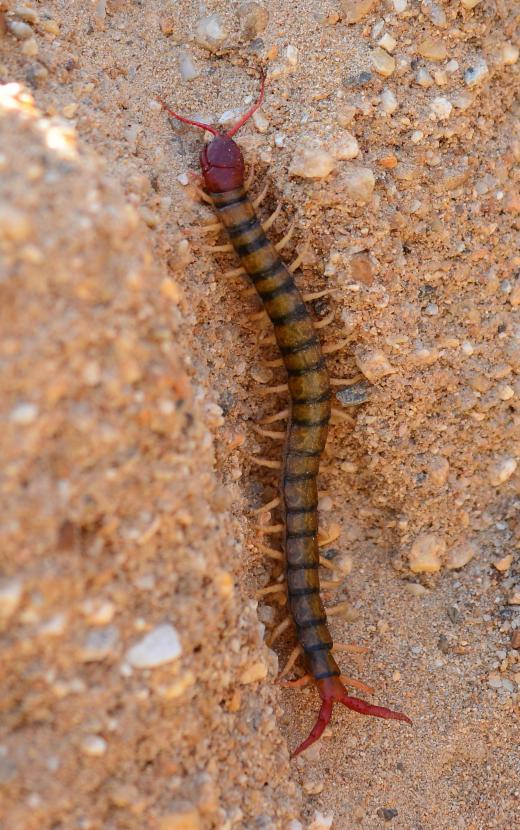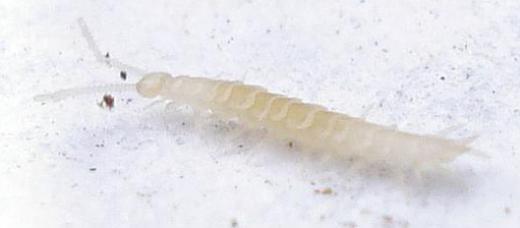What are Myriapods?
 Michael Anissimov
Michael Anissimov
Myriapods are a group of arthropods which includes millipedes, centipedes, pauropods, and symphylans. Although each of these sub-groups is believed to be monophyletic (descending from a common ancestor), it is less certain whether the entire group is monophyletic. One specimen of a rare millipede found in central California, Illacme plenipes, had 750 legs, the most out of any recorded animal, but most myriapods have between 20 and 400 legs.
The signature characteristic of myriapods are their numerous legs, but many of them have other common characteristics, such as repugnatorial glands, which produce an irritant liquid used to discourage predators. This liquid often contains benzoquinones, which can blister human skin.

Myriapods are remarkable for including the oldest known land animal, Pneumodesmus newmani, a millipede which lived in Scotland 428 million years ago, during the Middle Silurian. It was known to be a land animal due to the presence of spiracles, small holes used for breathing air. The 1-cm (0.4 in) fossil fragment was discovered by a bus driver, Mike Newman, who hunted fossils as a hobby. It was found to be 20 million years older than the previous oldest known land animal, a spider-like fossil that was also found in Scotland. Because Scotland was weathered extensively by glaciers throughout its history, it has left ancient strata fully exposed and ready for fossil hunting.

Of the myriapods, centipedes are mostly carnivorous (which is reflected in their fearsome appearance), while millipedes mostly consume detritus, although a few species eat other small arthropods. Symphylans and pauropods are small soil arthropods that superficially resemble centipedes and move rapidly between soil grains.
All myriapods are most numerous in moist forests, where they fill an important role in breaking down plant material, creating nutrient-rich detritus for bacteria to break down even further. If you lift up a log in a moist forest, you'll likely see dozens of myriapods scurrying out.
AS FEATURED ON:
AS FEATURED ON:













Discussion Comments
I have a question. Why are centipedes carnivorous and do they have teeth capable of chewing human flesh?
Dear anon104794: I had a research project and they have one important use in soil. They eat the bad soil (nearly like worms) but then they spread special liquid all over it to stop the weeds to grow. Unluckily, there are not many in people's gardens. I hope this helped.
what are its uses in soil?
Post your comments